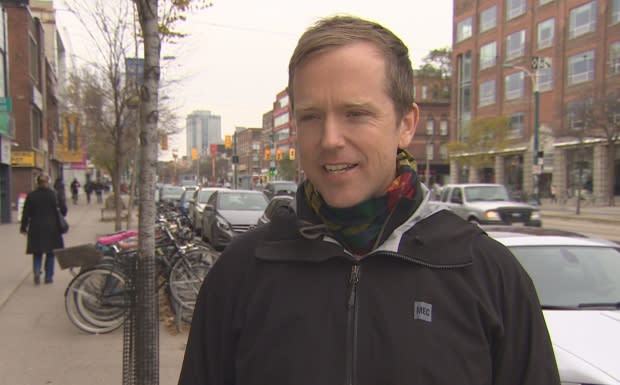Toronto Bike to Work Day pushing for better infrastructure, safety on roads
As hundreds of Torontonians start their ride from the intersection of Charles and Yonge streets down to Nathan Phillips Square for Toronto's 30th Bike to Work Day — many of those same riders are thinking about how much cycling culture has grown in Toronto.
"[Bikes] are this really simple 19th century invention that is helping to solve 21st century problems, namely traffic congestion," said Jared Kolb, executive director of Cycle Toronto.
Kolb's advocacy group says there's been a 1,200 per cent increase in traffic along downtown's Richmond-Adelaide corridor since its launch in 2014.
The group's data says that stretch of protected bike lanes is now among the city's busiest thoroughfares, alongside the protected bike lanes on Bloor Street.

But many cyclists say the roads are still not safe enough, as clashes between drivers, cyclists and pedestrians are still at critical levels.
According to Toronto Police data, four cyclists were killed on the roads in 2018. As of May 21, 2019, no cyclists have been killed and Kolb believes that despite the tragedies that occasionally happen on the road, there has been progress, largely due to an increase of investment in biking infrastructure.
"Any number is too high ... [but] it is getting safer to ride in Toronto. Is it safe enough? I think there's still a lot of work we got to do to create a true grid of protected bike lanes," Kolb said.
City of Toronto staff are currently working on an updated report for the "10 Year Cycling Network" plan to be presented to council in June.
The plan, approved in 2016, will feature protected lanes on major corridors and painted bike lanes on quieter, residential roads, totalling more than 525 kilometres.
A growing ridership
Cycle Toronto's data shows that five per cent of all road users in the downtown core are cyclists.

And Bike Share, run by the Toronto Parking Authority, has created a network of more than 6,000 bikes in a five-year period.
With the growing numbers, Kolb said it may not be fair to compare Toronto to commuting cyclist capitals like Copenhagen and Amsterdam. But he points to the city of Seville in Spain as a good model for what Toronto can aspire to be.
"[Seville] was at five per cent [ridership], kind of like us in downtown Toronto. They were there about 15 years ago. And they committed strongly, to a mainstreet protected bike lanes to get those eight and 80-year-olds out on a bike."

